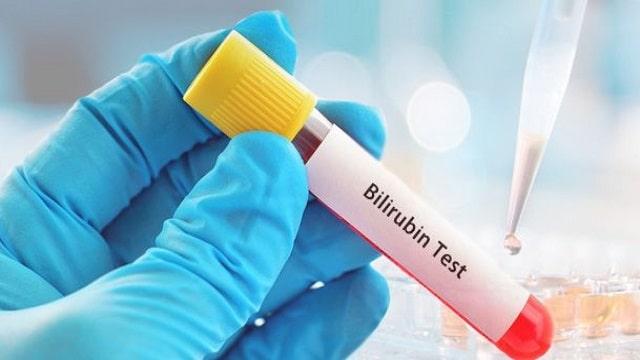Direct Bilirubin Check
A Bilirubin check is done to determine the level of direct bilirubin in the blood. Previously, it should be noted that bilirubin is an orange-yellow pigment that is a residue from the breakdown of red blood cells. In the human body, bilirubin is filtered by the liver and exits the body through feces or urine.
Bilirubin tests are performed to determine bilirubin levels, including direct bilirubin, indirect bilirubin, and total bilirubin. Before reaching the liver, bilirubin is still not combined with each other, aka not conjugated. After going through the process and reaching the liver, bilirubin will combine with certain sugars and then change into conjugated bilirubin.
Bilirubin that has been combined can dissolve in water and exit the liver and intestines. Then, bilirubin will return to being unconjugated on the way before being excreted by the body. In this examination, there is something called direct bilirubin which is used to detect conjugated bilirubin. Direct bilirubin levels that are above average can be a sign that something is wrong with the liver.
Why Do a Direct Bilirubin Test?
A bilirubin test is performed to measure the level of direct bilirubin, also known as conjugated bilirubin in the blood. Bilirubin is a waste product from the breakdown of old red blood cells that is processed by the liver to be excreted from the body.
Meanwhile, direct bilirubin is a water-soluble form that is excreted from the liver. Increased levels of direct bilirubin often indicate conditions such as:
- Hepatitis virus.
- Alcoholic liver disease.
- Biliary disease.
- Associated conditions such as gallstones.
- Tumor.
- Scarring of the bile ducts.
Another reason for elevated bilirubin levels is that more red blood cells are being destroyed than usual. This condition is called hemolysis. Sometimes bilirubin is measured as part of a test. Often, the liver is evaluated with a group of tests that also include:
- Alanine transaminase.
- Aspartate aminotransferase.
- Alkaline phosphatase.
- Albumin.
- Total protein.
Bilirubin tests are often performed when someone is experiencing symptoms of liver disease. The results of a direct bilirubin test are often useful when used in conjunction with the results of a total bilirubin test. The results of these two tests can help differentiate between different types of disorders.
Under normal conditions, i.e. without any abnormalities, direct bilirubin is actually almost never found in the blood. This happens because the disposal process is fast.
When Should You Do a Direct Bilirubin Check?
This examination is recommended for people who have a history or risk factors for damage and disorders of the liver. Direct bilirubin checks are usually accompanied by other tests and are performed after symptoms of liver dysfunction appear.
A doctor will usually recommend a direct bilirubin test if a person:
- Showing signs of jaundice.
- Having anemia, or low red blood cells.
- Having a toxic reaction to medications.
- Have a history of alcohol addiction.
- Ever been exposed to the hepatitis virus?
- Suffering from cirrhosis.
A person may also need to undergo a direct bilirubin test if they have symptoms such as:
- Dark-colored urine.
- Nausea and vomiting.
- Stomach ache or swollen stomach.
- Clay-colored stool.
- Fatigue.
How to Perform a Direct Bilirubin Check?
Checking bilirubin levels is done by taking a blood sample which will then be analyzed in the laboratory. Here is the procedure for checking direct bilirubin:
- Patients are required to fast from eating and drinking for 4 hours.
- Patients should also stop taking any medications that could affect the test results.
- Blood samples for examination are taken through venipuncture. Sampling is done by injecting a needle into a vein in the arm and the blood will be stored in a test tube.
- After that, the blood sample will be taken to the laboratory to see the direct bilirubin levels.
Risks of Performing a Direct Bilirubin Test
When your blood is drawn, you may feel moderate pain or a slight pinching sensation. After the needle is removed, you may feel a throbbing sensation.
There are some very rare risks after a blood sample is taken, namely:
- Dizziness or fainting.
- Hematoma, a bruise where blood collects under the skin.
- Infection is usually prevented by cleaning the skin before the needle is inserted.
- Excessive bleeding, or bleeding for a long time afterward. This may indicate more serious bleeding and should be reported to your doctor.
Normal Results of Direct Bilirubin Check
In older children or adults, the normal direct bilirubin level is 0-0.4 milligrams per deciliter (mg/dL). If the test results show abnormal direct bilirubin levels, your doctor may recommend other tests to determine the cause.
Where to Check Direct Bilirubin?
Direct bilirubin checks are performed by experienced personnel in their field. This test can be performed at any health facility, from clinics or health centers, hospitals, and emergency units (UGD), to health laboratories.

